

Damion Smy
GWM Cannon Alpha ute, Tank 300 HEV and Tank 500 recalled
18 Hours Ago
The turbo-diesel xDrive30d might just be the sweet spot of the BMW X5 range, offering all the performance you need and decent fuel economy, too.
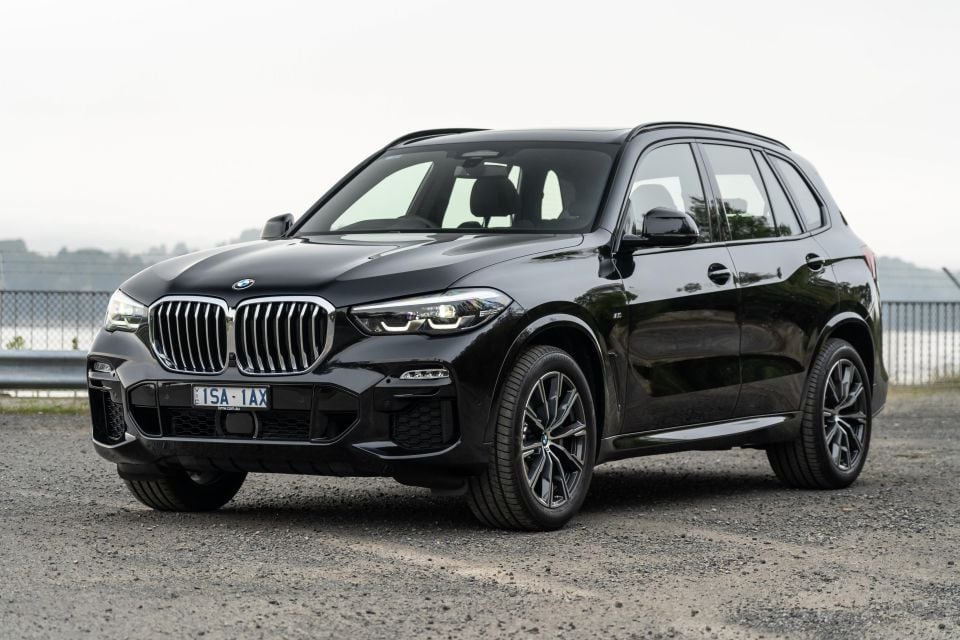
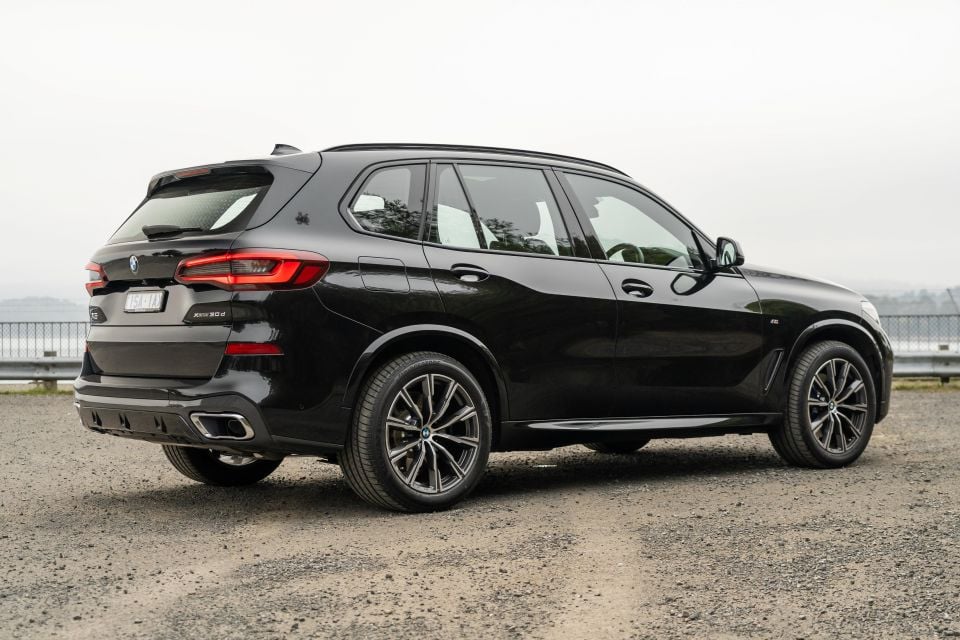

News Editor
New from
$119,900
excl. on-roads

News Editor
New from
$119,900
excl. on-roads


News Editor
New from
$119,900
excl. on-roads

News Editor
New from
$119,900
excl. on-roads
Quickly see how this car stacks up against its competition. Select any benchmark to see more details.
Where expert car reviews meet expert car buying – CarExpert gives you trusted advice, personalised service and real savings on your next new car.
It’s been over 20 years since BMW debuted its first X5.
Instead of adopting body-on-frame construction like the first Mercedes-Benz ML, or more hastily conceived luxury-brand SUVs like the Lexus LX, it was unibody just like a BMW 5 Series. Thanks to its unibody construction, it was far sportier and car-like to drive than other SUVs at the time.
Since then, BMW has carefully evolved the X5 without fundamentally changing what it is and what it stands for. It’s still one of the more dynamic options in its class, though it offers more luxury accoutrements than ever before. It’s kept up with BMW’s changes in design language, but it’s still identifiable as an X5 and has avoided some of the company’s recent design excesses.
It’s clear, then, why the X5 remains one of the best-selling SUVs in its segment. In the sales race, it sits neck-and-neck with the Mercedes-Benz GLE wagon, while its coupe-styled X6 sibling battles the GLE Coupe.
The two American-built arch-rivals have been recently redesigned and continue to offer turbo-diesel six-cylinder powertrains amongst other options, which remain the volume fuel type of choice in the larger luxury SUV segments in Australia.
We’ve gotten behind the wheel of a 2021 BMW X5 xDrive30d to see if it deserves its spot atop the large luxury SUV sales charts.

The 2021 BMW X5 xDrive30d rings in at $121,900 before on-road costs. That’s a substantial $17,000 more than a base four-cylinder xDrive25d, but there’s a more powerful engine and plenty more kit.
There are nine exterior colours, and all but white are $1539. A third row of seating costs an additional $3350 – not a bad idea if you only need extra seats for occasional use by children and don’t want to step up to the larger X7.
There’s a vast array of turbo-diesel six-cylinder rivals, most of which offer a third row of seating.
The X5 xDrive30d undercuts its most direct rival, the Mercedes-Benz GLE400d, which is priced at $126,200 before on-road costs.
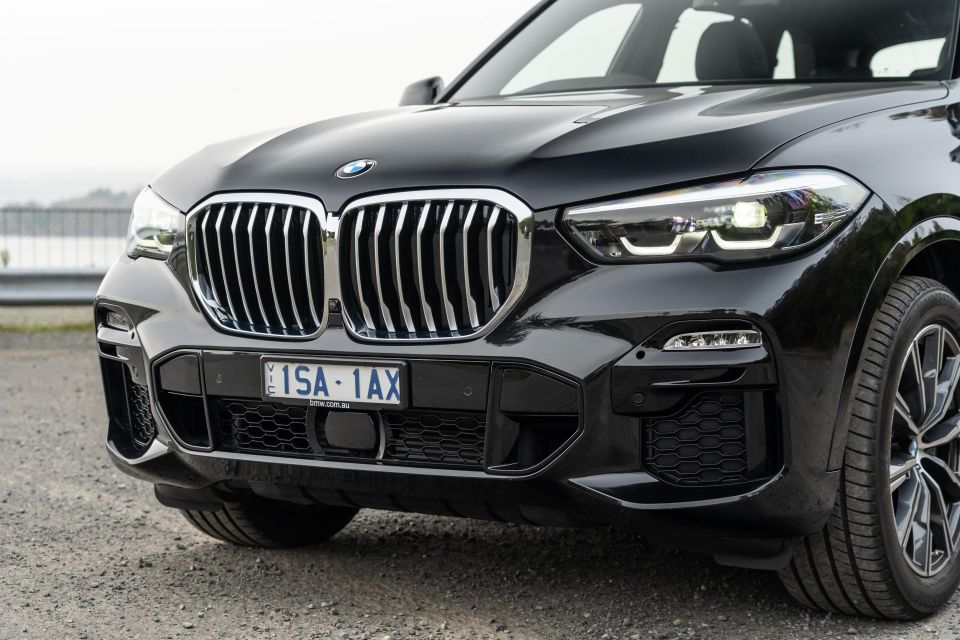
An Audi Q7, which includes three rows as standard, costs $115,300 list in turbo-diesel six-cylinder 50 TDI guise, or $122,500 list with the sporty S Line package.
The Range Rover Sport costs $115,506 before on-roads in D250 SE guise, or $125,006 list for the more powerful D300 SE.
While its prices are fixed, the Genesis GV80 3.0D AWD considerably undercuts the X5. It’s priced at $103,600 before on-roads.
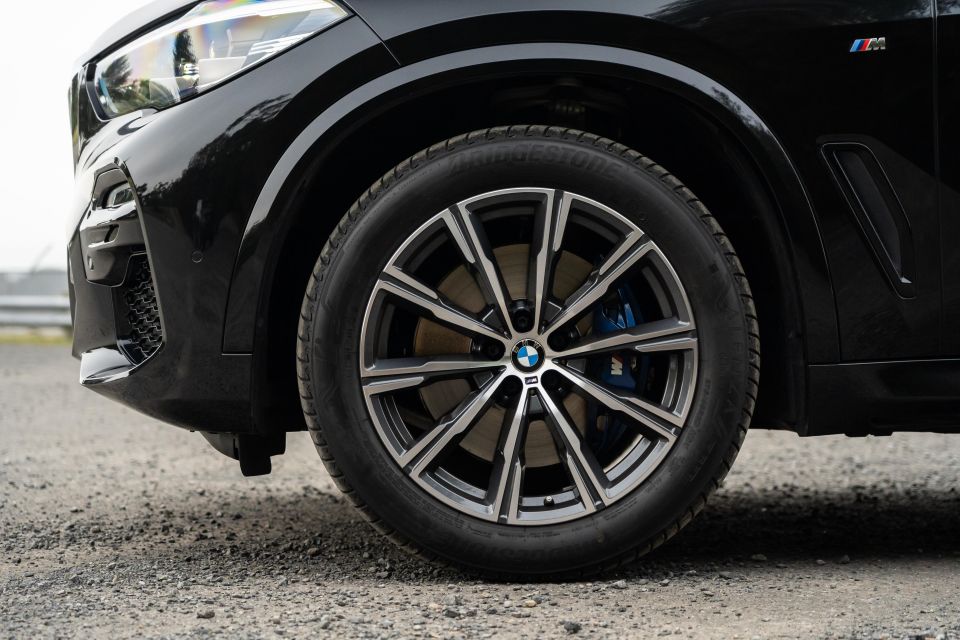
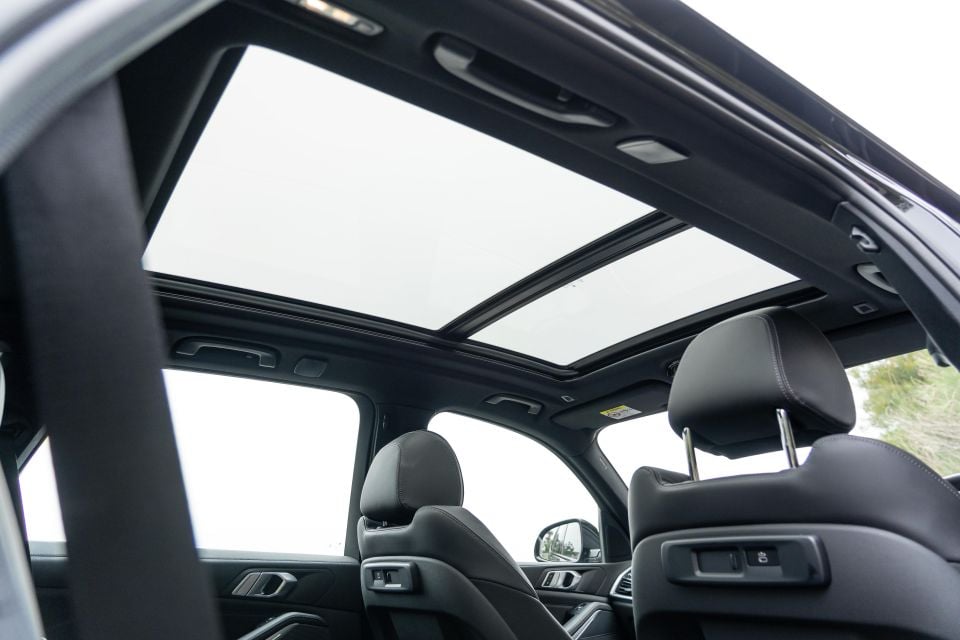
Buy your new car without the stress. It's fast, simple and completely free.

Great service from Travis and team, second time I have used this business would not hesitate to recommend them to anyone
Craig C.
Purchased a Ford Ranger in Sunshine Coast, QLD
CarExpert helped Craig save thousands on his Ford Ranger, now let us save you on your next new car.
Find a dealThe X5 xDrive30d comes standard with the M Sport package, which includes:
Unusually, selecting the option for a third row of seating ditches the panoramic sunroof but adds air suspension.
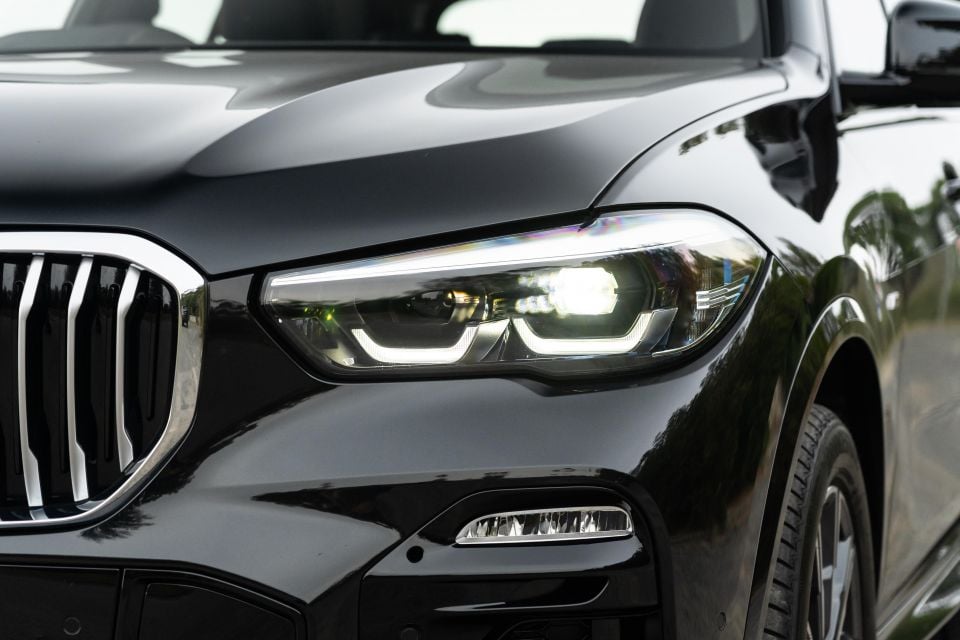
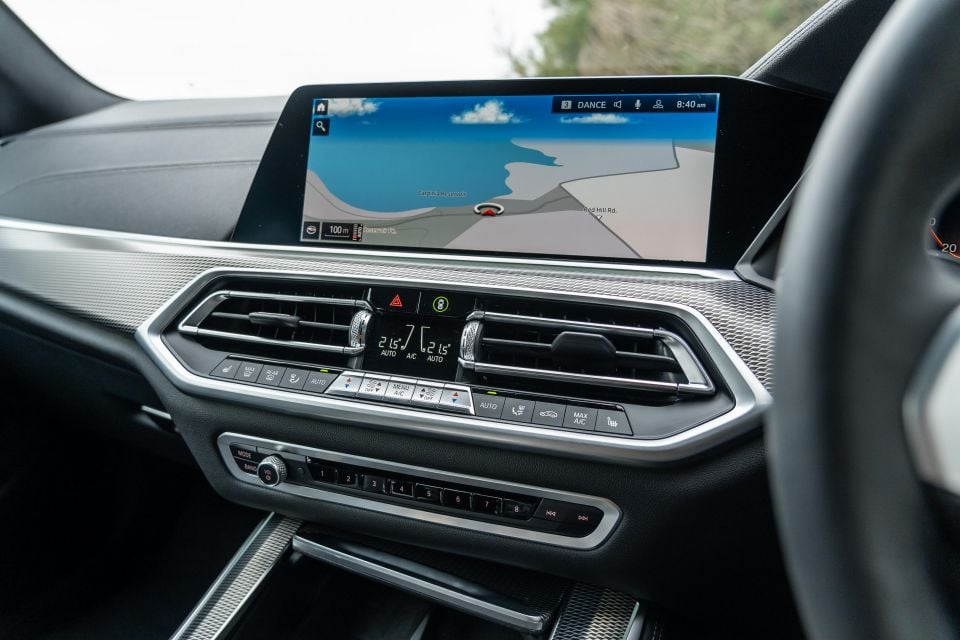
These standard features are in addition to those found on the base xDrive25d, which include:

There’s a vast number of options available on the X5, as befitting a German luxury car.
These range from options that cost as little as $500 (temperature-controlled cupholders) to pricey packages.
The $8200 xOffroad package, for example, adds extended front underbody protection, a rear mechanical differential lock, off-road driving modes and adaptive air suspension. It’s available only on the xDrive30d.
The $7800 Indulgence Package adds ventilated and massaging front seats, heated rear seats and soft-close doors. Some of these features, like ventilated front seats, are also available as standalone options.

Other standalone options include BMW Night Vision with pedestrian recognition, a rear-seat entertainment package, and a 20-speaker Bowers & Wilkins sound system.
Some rivals are better-equipped. The Genesis GV80 3.0D does without a digital instrument cluster if you don’t tick the box for the $10,000 Luxury Package, but includes as standard ventilated front seats and a 21-speaker sound system.
An Audi Q7 50 TDI includes a third row of seating as standard, plus air suspension, Matrix LED headlights and four-zone climate control.
The X5 stacks up well against the Mercedes-Benz GLE400d, however, offering a largely identical standard equipment list but a lower price.
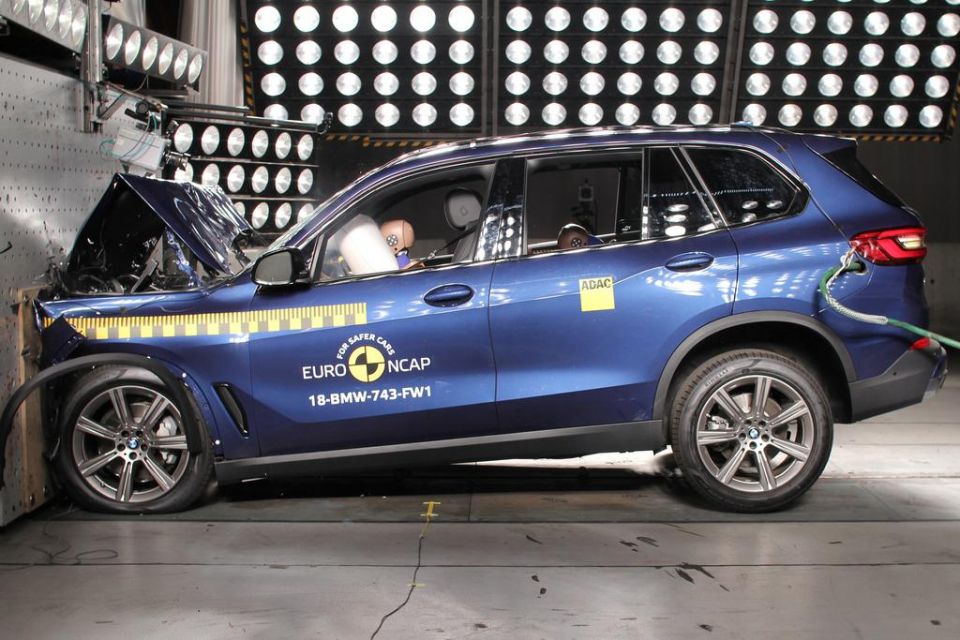
The BMW X5 has a five-star ANCAP safety rating based on testing conducted by Euro NCAP in 2018 – though the rating only applies to six-cylinder diesel models.
It received a score of 89 per cent for adult occupant protection, 87 per cent for child occupant protection, 75 per cent for vulnerable road user protection and 71 per cent for safety assist.
All 2021 BMW X5 models come standard with the following safety equipment:
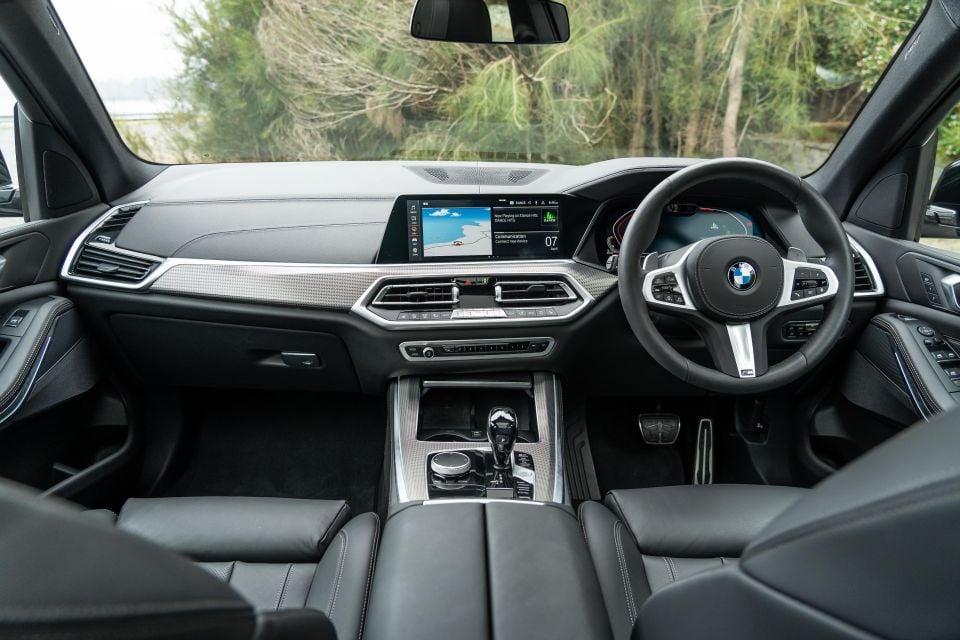
There’s a big step up in cabin ambience when you go from an X3 to an X5.
Every surface is covered in leather, leatherette or soft-touch plastic, right down to the farthest reaches of the dashboard and doors, while the pillars are upholstered in cloth. You grip a nice, chunky leather-wrapped wheel and sit in plush, supportive seats.
While our tester had a black-on-black interior, it was brightened up with the M Sport package’s standard aluminium trim, which is distinctive without being gaudy.

There’s another style of aluminium trim available as a no-cost option if this doesn’t float your boat, plus a few different wood inserts. The standard panoramic sunroof also brightens things up.
The switchgear looks and feels nice, particularly the weighty, knurled metal iDrive controller. Piano black trim is mercifully limited to a few buttons around the shifter, including the buttons for the different drive modes.
These buttons all kind of blur together, and we’d like to see a more prominent drive mode selector. The use of piano black also suggests these buttons are touch-capacitive, but they’re not.
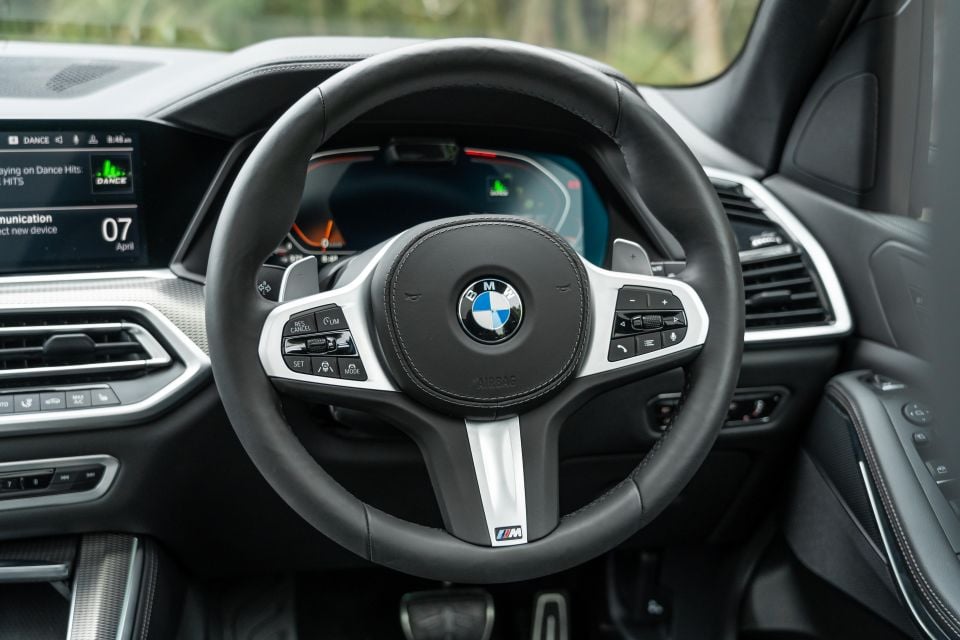
In contrast, the steering wheel buttons are large and clearly labelled. Behind the wheel are the paddle shifters, which have a shiny metal look on the front but a matte feel at the rear.
There’s plenty of storage up front, including an easy-to-miss cubby on the right-hand side of the steering wheel, a fairly spacious centre console bin with a rubberised floor, and bottle holders that can easily swallow the likes of a Voss bottle.
You’ll find a single USB-A outlet at the base of the centre stack near a 12V outlet, with a USB-C outlet in the centre console bin. A couple more outlets wouldn’t go astray.
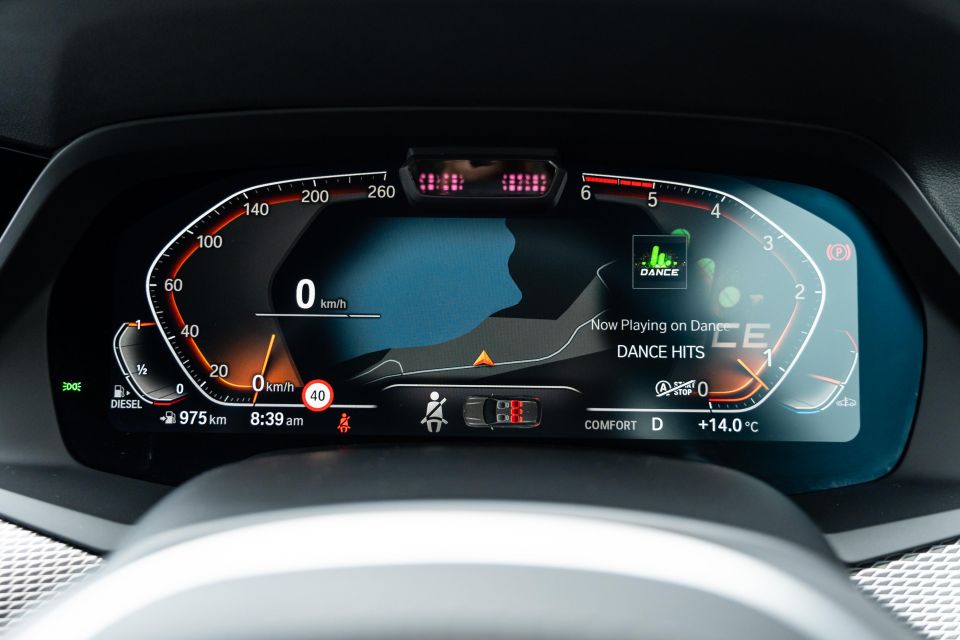
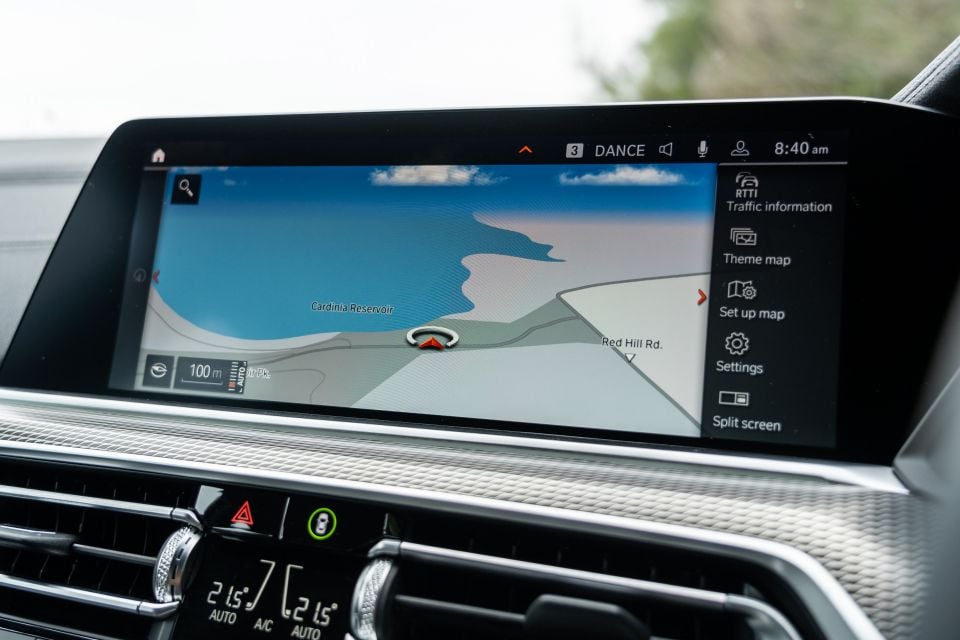
In terms of technology, the X5 stacks up well. The digital instrument cluster is attractive and easy to read, while the 12.3-inch infotainment system is quick and responsive. It’s controlled via touch inputs or the iDrive controller on the centre console.
Voice inputs work well, too – you can press the voice prompt button on the steering wheel and say an address and the navigation system will instantly search for it. The ‘clicks’ the infotainment system makes are also less annoying than the tinny sounds that come from the GLE’s touchscreen.
Our only complaint about the infotainment is regarding the map graphics. They can look a bit cluttered, and when you’re navigating somewhere your route is partially highlighted in white instead of being given a different colour.
The navigation display in the digital instrument cluster, while not as detailed as the Virtual Cockpit in the rival Audi Q7, gives you a much clearer picture of where you’re going. It’s a stripped-down map view, but your route is clearly bolded.
You’ll also find turn-by-turn instructions in the head-up display, while your turn-by-turn instructions will even appear when you’re using navigation via smartphone mirroring.
Wireless Android Auto only ever dropped out once or twice, and it was in the same inner-city neighbourhood where we’ve experienced similar issues in other vehicles. Otherwise, the system was reliable.
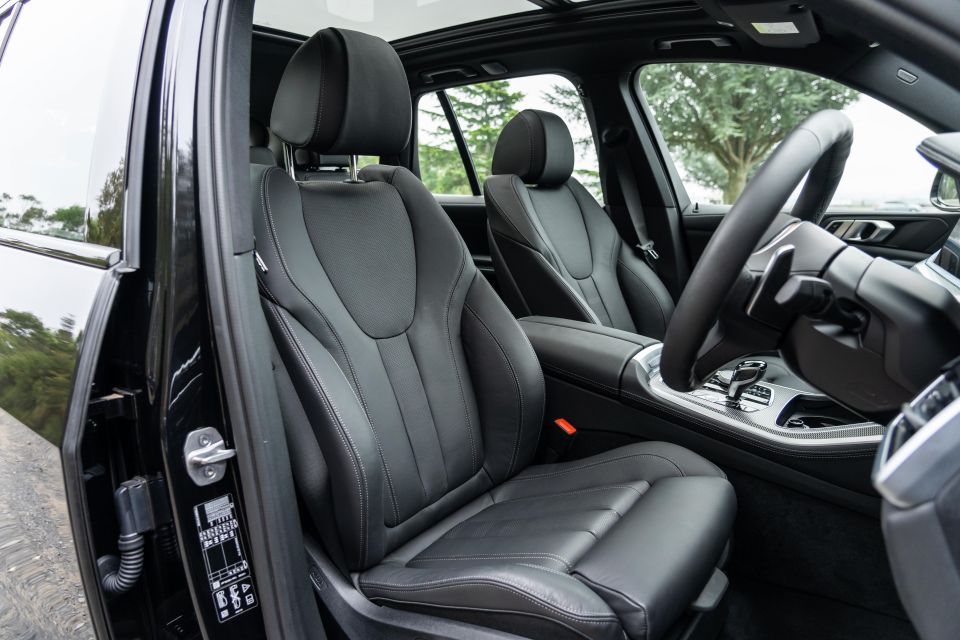

Parking is a doddle in the X5. There’s a semi-autonomous parking assist system, while the standard parking view has numerous active guides. You can change camera angles and there’s also a surround-view camera. All the footage has a high resolution.
Even the simple act of unlocking the X5 is effortless. It features Comfort Access keyless entry, which means it unlocks as you approach it if you have the key in your pocket or purse, and locks as you walk away.
Sometimes the system gets confused, though – when filling up the X5, it kept locking and unlocking itself repeatedly.
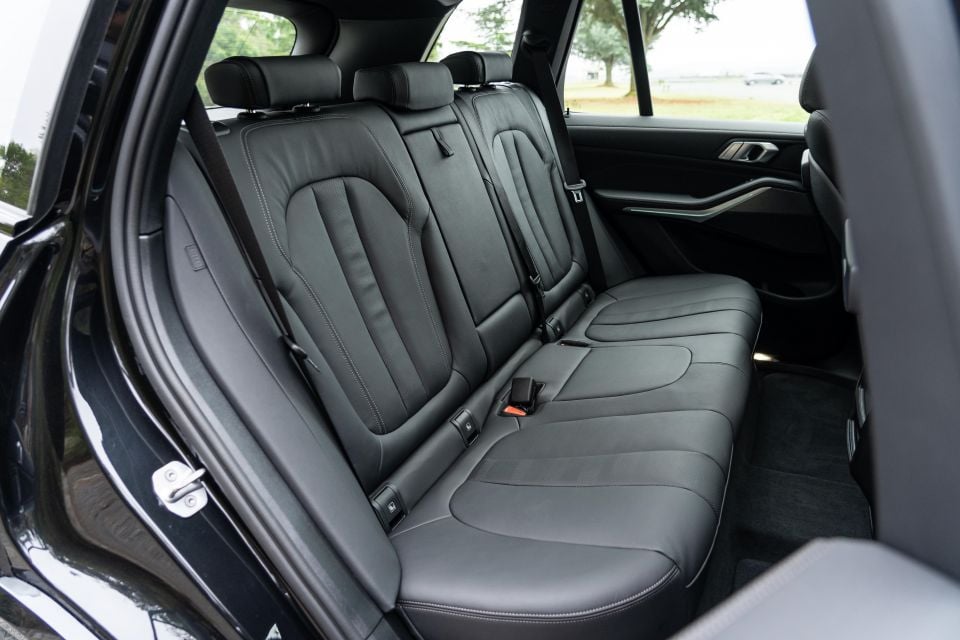

Where expert car reviews meet expert car buying – CarExpert gives you trusted advice, personalised service and real savings on your next new car.
Step into the back and there’s a comfortable rear bench with ample legroom and toe room. There’s also plenty of headroom despite the presence of the massive panoramic sunroof.
Rear-seat passengers have USB-C outlets on the front seatbacks, plus air vents, a 12V outlet, and a fold-down centre armrest with cupholders and a shallow storage cubby.
The bottle holders in the doors are a touch smaller than those up front but still accommodate large drink bottles. Other storage includes a couple of small shelves at the rear of the centre console, plus seatback map pockets.
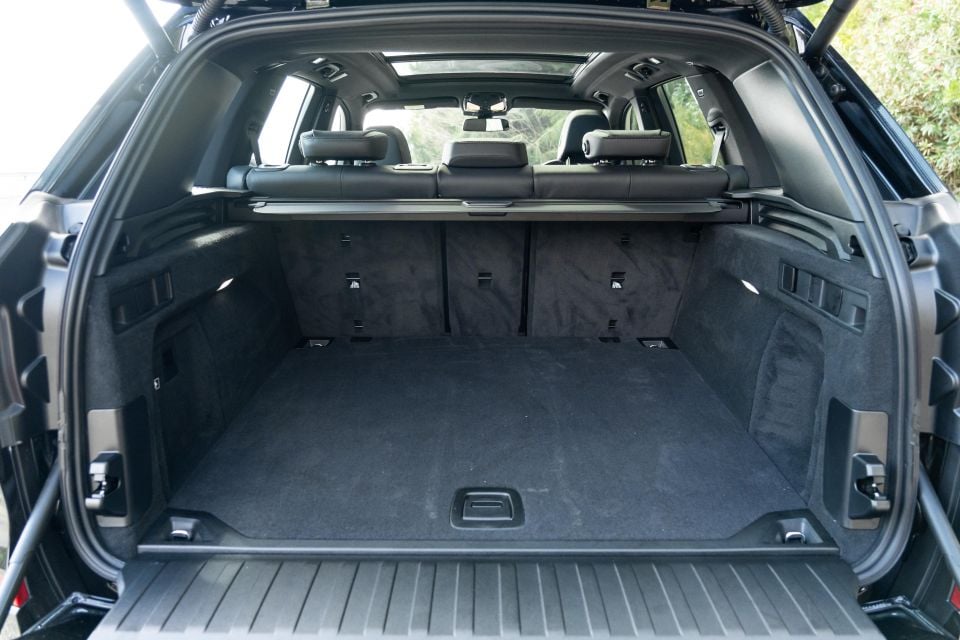

The X5 has a clever split tailgate, which provides you with a handy ledge that can double as a seat at a tailgate party or an emergency changing table.
There’s 650L of boot space, and you can pull a couple of levers to drop the second row and increase that to 1870L. There’s also a 12V outlet back here.
Lift up the boot floor and there’s a space-saver spare tyre, which is a bit odd as the X5 is shod with run-flat tyres.

Missteps in the cabin are few. Most significantly, the stability control off switch is located between the shifter and the base of the centre stack, which meant I accidentally knocked it once and turned off the system.
The wireless charging pad is tucked away out of sight, which means – depending on your device – you mightn’t be able to visually confirm whether your phone is charging as half of it will be concealed.
Finally, while it’s not bad, the sound system isn’t remarkable. BMW will sell you an optional 20-speaker Bowers & Wilkins unit though, if you’re an audiophile.
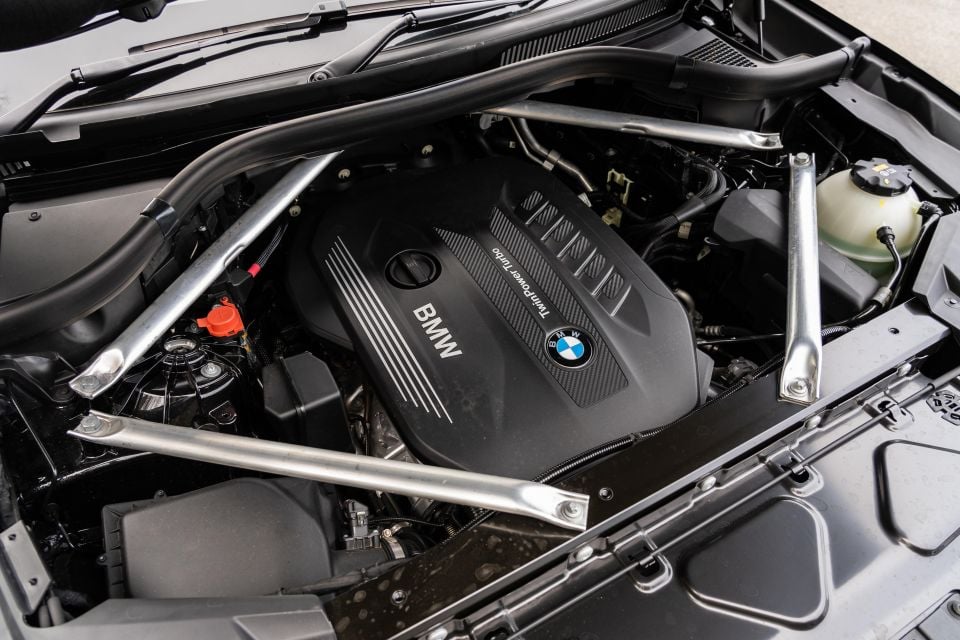
The X5 xDrive30d uses a 3.0-litre inline-six turbo-diesel producing 195kW of power and 620Nm of torque, up 25kW and 170Nm over the four-cylinder turbo-diesel of the xDrive25d.
While it’s down 55kW on the petrol xDrive40i, there’s 170Nm more torque on tap and peak torque is available between 2000 and 2500rpm. The X5 xDrive30d will also dispatch the 0-100km/h sprint in just 6.5 seconds, a second faster than the base diesel if a second slower than the petrol xDrive40i.
The GLE400d is quicker, though, with a 0-100km/h time of 5.7 seconds. It also uses a 3.0-litre turbo-diesel inline-six, though it puts out 243kW and 700Nm.
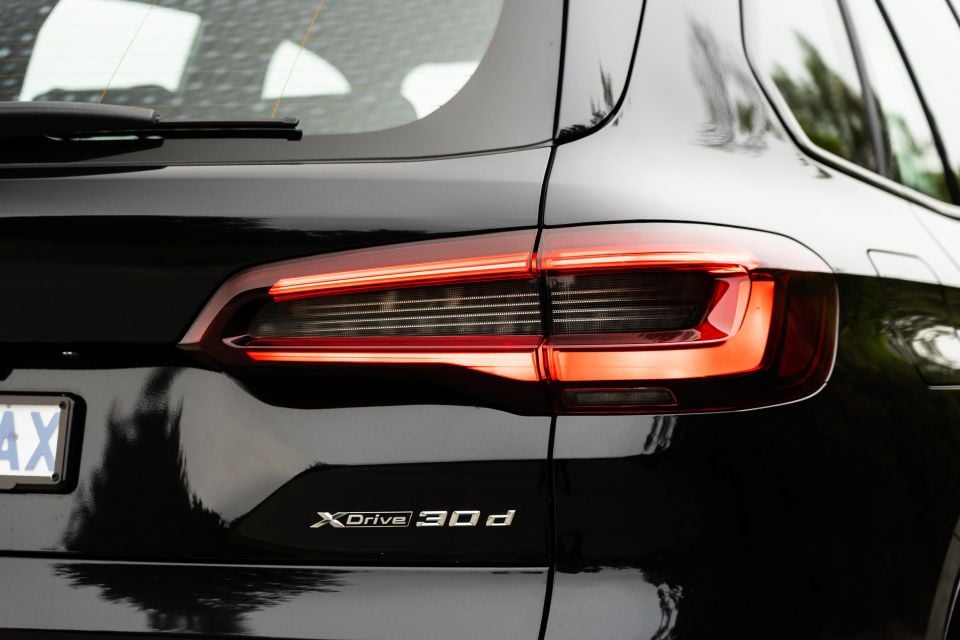
The Genesis GV80’s 3.0-litre inline-six turbo-diesel puts out 204kW and 588Nm, while the turbo-diesel 3.0-litre V6 in the Audi Q7 50 TDI and Volkswagen Touareg 210TDI puts out 210kW and 600Nm.
Finally, the 3.0-litre inline-six turbo-diesel in the Range Rover Sport puts out 183kW and 600Nm in D250 guise and 221kW and 650Nm in the D300.
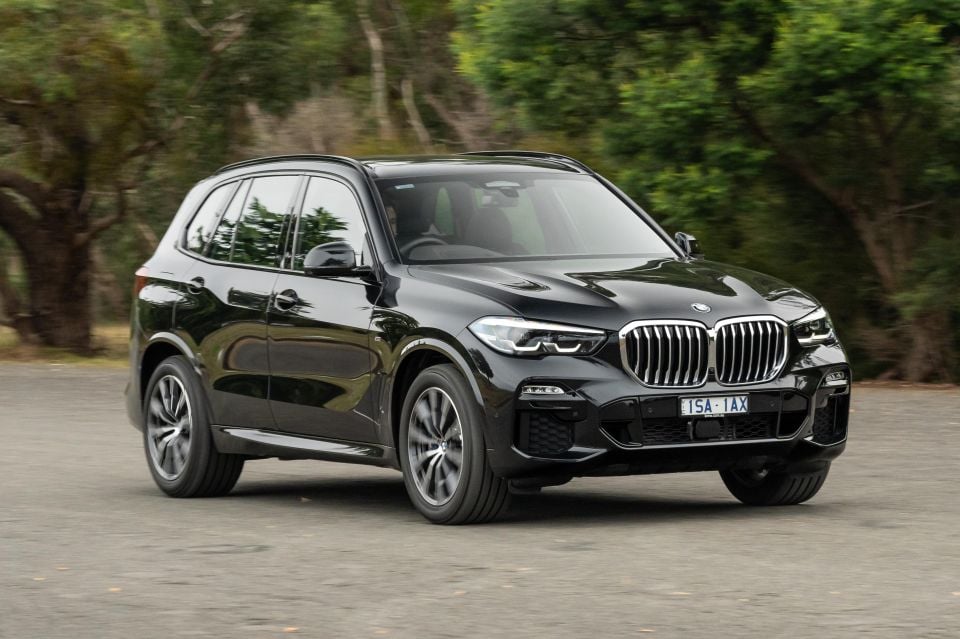
The turbo-diesel six is really all that you need in an X5.
While it might be down somewhat in power and torque against its GLE arch-rival, the X5 xDrive30d always feels punchy.
It has more torque than all X5s bar the V8 M50i and X5 M, and yet it uses only 0.5L/100km more fuel on the combined cycle than the base four-cylinder diesel.
Having driven the M50i, I can confirm in day-to-day driving its extra thrust isn’t quite as noticeable as you’d think and the xDrive30d has more than enough grunt for the likes of school drop-offs and highway overtaking with no discernible turbo lag.
There’s no real need to put it into Sport mode, though doing so adds some more weight to the steering and firms up the adaptive dampers so it’s a good choice if you’re on some winding mountain roads. There’s also an Adaptive mode, which monitors your driving style and adjusts the various parameters accordingly. We left it in Comfort for the most part, though.
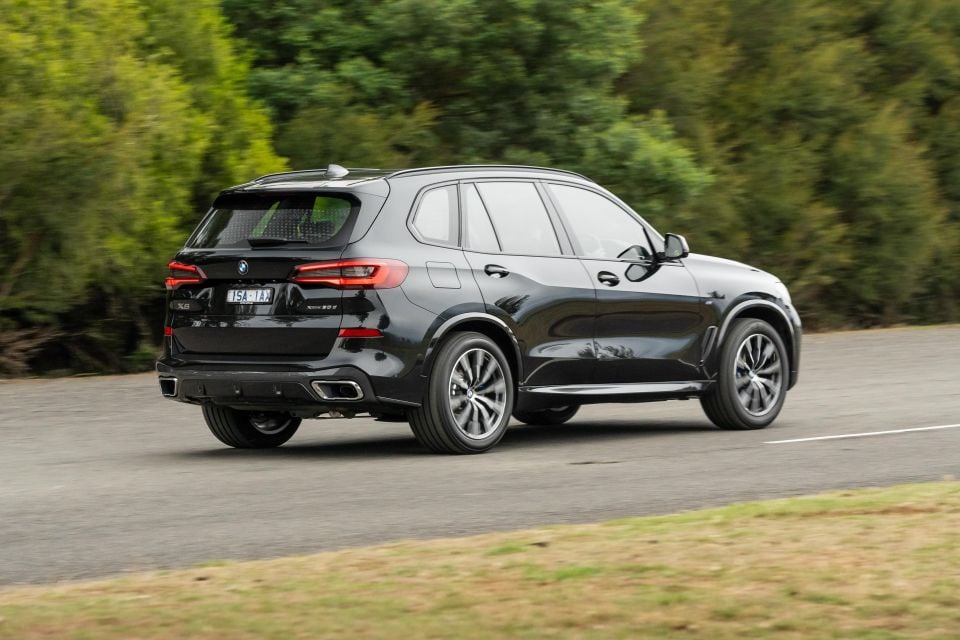
Diesels aren’t typically known for their mellifluous engine notes but the X5’s inline-six turbo-diesel is one of the better sounding oil-burners out there.
Frankly, it’s a diesel you actually want to listen to, with the traditional diesel clatter present only from the outside. It’s a quiet engine albeit with a subtle growl when you plant your foot.
Road noise is also nicely muffled, with tyre roar only really present on coarse-chip, high-speed rural roads.
The X5 can’t completely disguise its size but it never feels ungainly. It’s surprisingly easy to pilot even in tighter urban confines, with the steering lightening up at lower speeds. While it doesn’t quite feel like a sports sedan on a set of tight curves, the X5 responds quickly to inputs.
The X5 has a firm ride but there’s enough suspension travel to make long-distance touring comfortable, and the car feels neither too harsh nor too floaty. It soaks up the bumps and ruts of inner-city road work zones and poorly surfaced suburban streets, though it occasionally felt a little jostled about on a couple of rural roads.
We’d love if there was a gravel drive mode as we encountered a bit of rear wheel slip on a couple of unsurfaced country roads.
The lane-keeping assist aids long-distance touring, and was only ever tripped up by particularly sharp curves.
The adaptive cruise control set-up in the X5 is particularly noteworthy. If you have it activated and drive past a speed sign, the traffic sign recognition system will display the new speed and you’ll be given the option to press a single button to adjust the adaptive cruise control speed accordingly.
The Caring Car function, accessible via the iDrive system, proved to be more than just a gimmick. On a lengthy jaunt out of Melbourne, we activated the Vitalize mode which changed the ambient lighting colour, played some dramatic music, and pumped continuous strong bursts of cold air into the cabin. It’s actually a pretty clever idea if you’re feeling a little worn from hours of driving but aren’t quite tired enough to need to pull over.
While many X5s will only do duty in big cities, BMW offers a towing package that bumps up braked towing capacity from 1900kg to 3500kg.
Speaking of options, we wouldn’t bother with the Enhancement Package, which adds 22-inch alloy wheels and a sports exhaust. The larger wheels will surely impact ride quality, while the xDrive30d sounds good enough already.
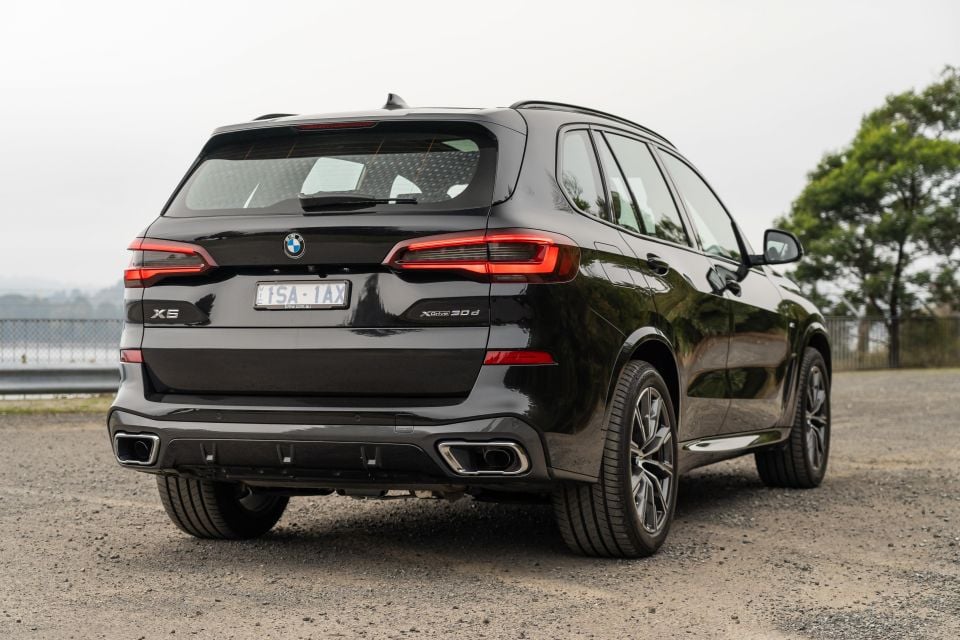
We averaged 9.0L/100km over a mix of inner-city and highway driving, a bit higher than BMW’s 7.2L/100km figure.
On a solo road trip from Melbourne to Nathalia, around 240km, we recorded fuel consumption of just 6.6L/100km. That actually bested the BMW’s advertised extra-urban figure of 7.0L/100km.
The X5 is covered by a three-year, unlimited-kilometre warranty. That’s pretty dismal, considering several luxury brands have moved to five-year warranties.
BMW offers a five-year/80,000km servicing plan for X5 models priced at $2250. It covers the replacement of fluids and filters, though the replacement of brake pads and discs and wiper blades is covered only under a more expensive Plus plan, priced at $5950.

The X5 xDrive30d might be a little less powerful than a GLE400d it’s slightly cheaper with equivalent spec levels, though it has a shorter warranty. While these two might enjoy the largest market share in this segment, though, there are plenty of other compelling alternatives.
The X5 might be one of the more dynamic, well-rounded options, but it’s also worth checking out the like of the Audi Q7, Genesis GV80 and Volkswagen Touareg.
Nevertheless, it’s pretty clear to see why the BMW X5 remains so popular.
Its handling is relatively nimble for such a large SUV, its cabin is classy, comfortable and spacious, while its torquey inline-six turbo-diesel deftly combines performance and fuel economy.
In fact, we see little reason to step higher up in the range as this engine so suits the X5.
MORE: BMW X5 news and reviews
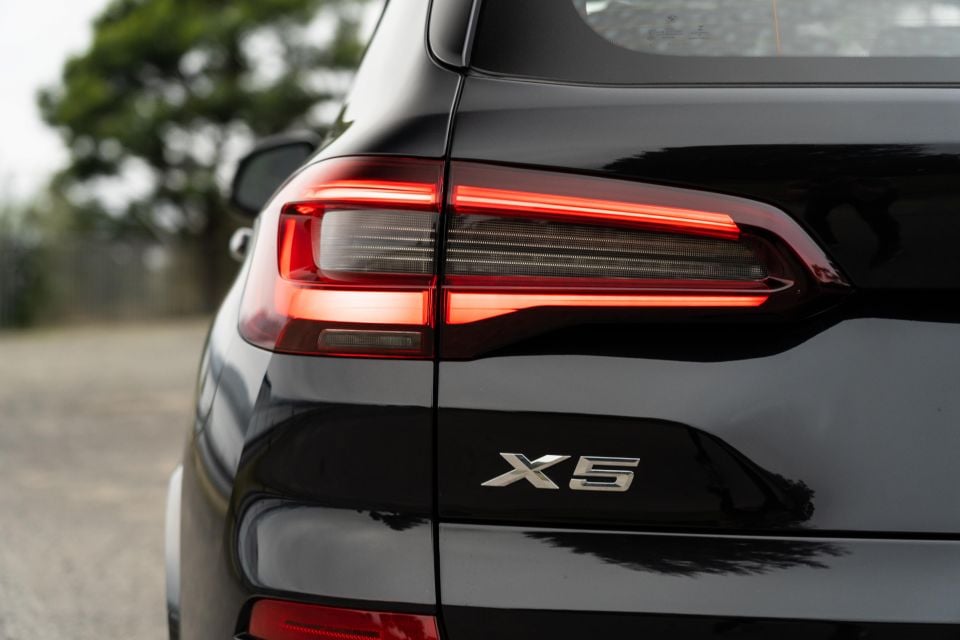
Where expert car reviews meet expert car buying – CarExpert gives you trusted advice, personalised service and real savings on your next new car.
William Stopford is an automotive journalist with a passion for mainstream cars, automotive history and overseas auto markets.


Damion Smy
18 Hours Ago


Josh Nevett
4 Days Ago


CarExpert.com.au
5 Days Ago


Damion Smy
7 Days Ago


Derek Fung
7 Days Ago


Ben Zachariah
10 Days Ago